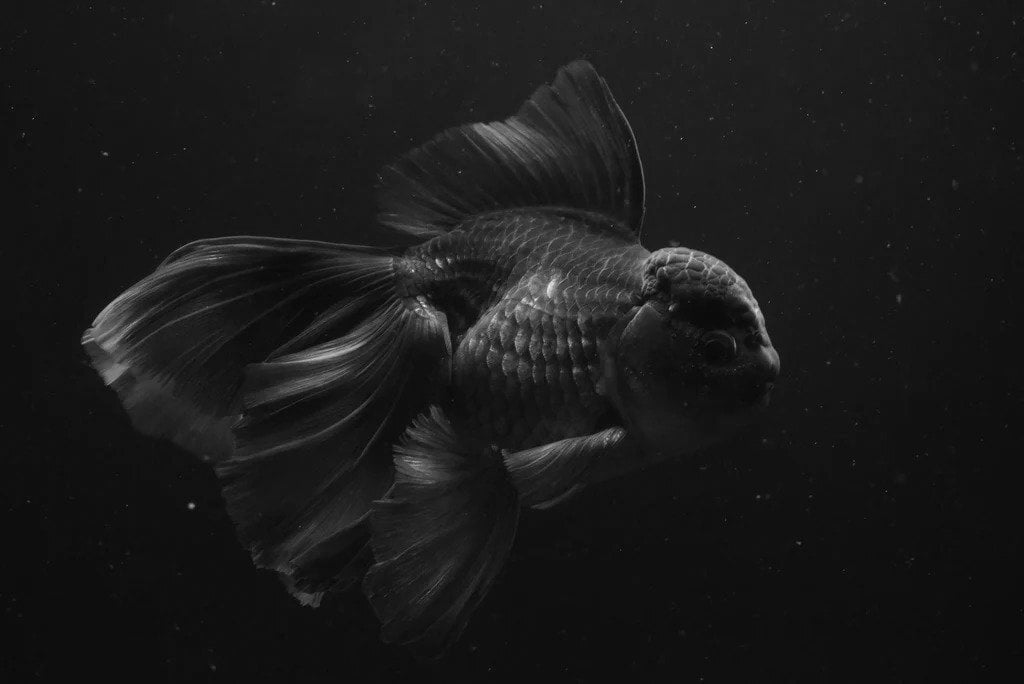Thai Oranda Goldfish
Thai Oranda goldfish, a variety of goldfish, are distinguished by their big, rounded bodies, adorable wen faces, and flowing fins. They swim in the aquarium with grace. Thai Oranda is a well-liked option for aquariums due to its ease of maintenance and hardiness. However, proper care is crucial to keep these charming creatures healthy and happy. In this goldfish care guide, we’ll cover everything you need to know about keeping your pet goldfish in tip-top shape.

Thai Oranda Goldfish – Aquarium Setup
One of the most important aspects of Thai oranda goldfish care is the aquarium setup. Goldfish are active and playful creatures that need plenty of room to swim and play. As a general rule, you should aim for a minimum tank size of 20 gallons for each goldfish. If you have multiple goldfish, you’ll need a larger tank to accommodate their growing size and increase waste production.
In addition to a spacious tank, it is important to provide your goldfish with plenty of hiding places, such as caves, rocks, and plants. Goldfish also prefer a slow-moving current, which can be achieved by using a sponge filter or a powerhead.
Water Parameters
Thai oranda Goldfish are hardy creatures that can tolerate a wide range of water parameters. However, it is important to maintain consistent water quality to keep them healthy. The ideal water temperature for goldfish is between 68-72°F, with a pH between 7.0-7.5. Regular water changes and proper filtration are crucial to maintaining optimal water quality.
Dietary Requirements
Thai oranda Goldfish are omnivores and require a balanced diet of both plant and animal-based foods. In the wild, they feed on a variety of small organisms such as insects, crustaceans, and aquatic plants. In captivity, it is important to replicate this balanced diet to provide your goldfish with all the essential nutrients they need to thrive.
Food Options
There are a variety of food options available for Thai oranda goldfish, including flakes, pellets, frozen, and live foods. It is important to choose a high-quality food that is specifically formulated for goldfish, as their nutritional needs are different from other types of fish.
Flake Food: This is the most commonly available type of food for goldfish and is easy to find at pet stores. It is a convenient and cost-effective option, but it is important to choose a high-quality brand to ensure your goldfish are getting the proper nutrition.
Pellets: Pellets are a more nutritious option for goldfish and are available in sinking or floating varieties. Sinking pellets are ideal for bottom-dwelling goldfish while floating pellets are better for goldfish that feed at the surface.
Frozen Food: Frozen food, such as bloodworms, brine shrimp, and krill, is a great way to provide your goldfish with a varied diet and is an especially good option for those who have trouble getting live food.
Live Food: Live food, such as worms, daphnia, and brine shrimp, is an excellent source of protein and provides a more natural diet for goldfish. However, it can be more difficult to find and store, and there is a risk of introducing disease into the aquarium.
Feeding Schedule for Thai Oranda Goldfish

Thai oranda Goldfish have a slow metabolism and do not require a lot of food. It is important to feed them small amounts multiple times a day rather than large quantities once or twice a day. Overfeeding can lead to water pollution and health problems for your goldfish.
It is also important to provide your goldfish with a varied diet to ensure they are getting all the nutrients they need. Mixing up their diet with different types of food, such as flakes, pellets, frozen, and live foods will provide them with a more balanced and nutritious diet.
Health
Thai oranda Goldfish are generally hardy creatures, but it is important to keep an eye out for any signs of illness. Some common signs of illness include loss of appetite, lethargy, cloudy eyes, and white spots on the skin. If you suspect your goldfish is ill, it is important to consult with a veterinarian who specializes in aquarium fish.
In conclusion, goldfish are charming and beloved pets that make a great addition to any aquarium. By following the guidelines in this goldfish care guide, you can help ensure your pet goldfish live a long and healthy life. Regular water changes, proper nutrition, and attentive care will go a long way in keeping your goldfish happy and healthy for many years to come.